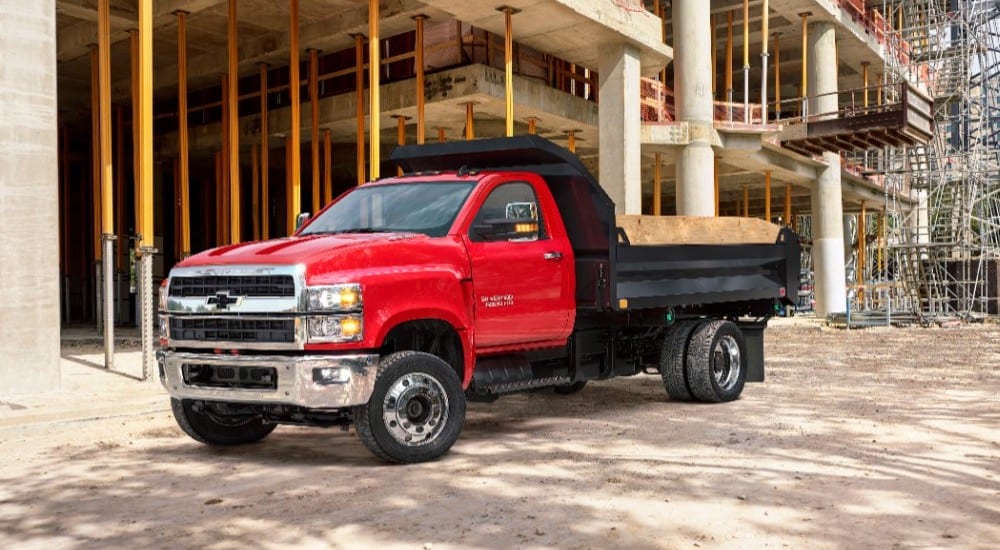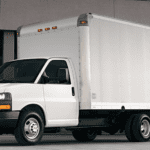Are you currently shopping around for dump trucks for sale? Besides that being an oddly-specific request, you’re also one of the few car buyers who are actually seeking this type of vehicle. After all, dump trucks are generally only desirable to those who need the truck for their profession, and there’s a good chance that the employer already has a fleet of vehicles.
In other words, if you are indeed shopping for a dump truck, then congratulations… you’re in a pretty exclusive club. Just because it’s not very common to shop for this particular vehicle, it doesn’t mean you should approach the buying process with any less focus. Instead, you should still be eyeing many of the same steps you follow when shopping for a standard ride. They all serve a (somewhat) similar purpose, right?
Below, we’ve explored several inspection steps you should be taking as you’re shopping for a dump truck. It’s unlikely you’re going to come across a brand-spanking new dump truck during your search, meaning this inspection will be of particular importance.
Inspection #1: Body
When it comes to inspecting your impending dump truck purchase, you presumably won’t be overly concerned about the cosmetics of the vehicle. However, that doesn’t mean you still shouldn’t be inspecting every exterior aspect of the ride. If you don’t, you may find that some essential aspects of the dump truck are compromised and not working.
Specifically, you’re going to want to look for any cracks or rust that are lingering on the body. If you find these indiscretions, there’s a good chance that the bed or body will need to eventually be repaired and/or replaced. You’ll want to keep a particular eye on the dump box, as this is the main incentive of opting for this particular vehicle. This inspection should also make its way down to the tires, as you’ll want to assure that these inclusions are in tip-top shape. If they’re not, you might have to dish out a pretty penny when you’re opting for a replacement.
Make sure you’re noticing whether the box is made of aluminum or steel, as this attribute could impact whether you want to opt for that particular target in the first space. Specifically, an aluminum dump box will tend to make the vehicle a whole lot lighter, and this will have a significant impact on fuel efficiency (and your wallet). On the flip side, a steel dump box will be heavier, but it will also be a whole lot more durable. If you’re required to transport or dump heavy, sharp aggregate, this may prove to be the better option.
Finally, you’ll want to inspect the hydraulic cylinders and all accompanying parts. If these inclusions aren’t operating to their full potential, there’s a good chance that you’ll see leaks under the dump truck. While this leaking fluid shouldn’t be an immediate red flag, it’s at least an issue that you could use to your financial advantage.
They tell you to never judge a book by its cover, and that’s certainly true when it comes to shopping for a vehicle. However, dump trucks are an interesting and unique product, and a cosmetic inspection is one of the few tools you’ll have to gauge the quality of the vehicle.
Inspection #2: Mechanics
You’ll next want to assure that the mechanical aspects of the dump truck are working properly. While the vehicle can operate with some indiscretions, you’ll potentially be compromising safety if every mechanical aspect isn’t operating correctly.
You’ll want to take a look at the frame, assuring that it’s still sturdy and durable. If you notice any cracks or bending, that’s a major indication that the dump truck is on its final leg. You’ll also want to make sure that these parts are devoid of any rust, as this will speed up the vehicle’s decline.
The axles are another important mechanical aspect of the vehicle. Lift axles are responsible for optimal weight distribution throughout the vehicle, and failing parts could lead to reduced driving quality. These parts also play a role in the driver’s handling of the ride, as the dump truck will be a whole lot more difficult to maneuver if the axles aren’t working properly.
Inspection #3: Interior
You’re presumably not going to be overly concerned about the interior of your dump truck. However, you’re still going to be spending a good portion of your time inside the actual vehicle, so you’ll want to make sure that all of the amenities are in good shape.
First, you’ll want to put the dump truck through the same tests that you would use for a standard car inspection. Start up the vehicle and make sure that the dump truck doesn’t experience any issues while it’s booting up. Assure that all of the lights and signals are working properly, and you’ll also want to make sure that the controls to the dump truck are all in order.
When you take the dump truck for a “test drive,” take note of any odd sounds that may be emanating from the engine. You’ll also want to observe the vehicle’s drivability. If you have issues braking or controlling the vehicle, you may want to reconsider your target.
From a cosmetic standpoint, make sure that all the standard features are working: windows, radio, seat recliners, and more. You won’t be able to deduct a whole lot of money from the asking price if these amenities aren’t included, but a combination of absences would justify a reduced asking price.
Finally, consider the sentiment that you’d use when analyzing a regularly used vehicle. Assure that the upholstery and carpeting are all in one piece, and take a look at whether the cab is devoid of any trash and grime. If it isn’t, there’s a good chance that the previous owner wasn’t too focused on maintaining the vehicle, and there’s a good chance that this logic applied to the mechanical aspects of the ride. Is this the kind of vehicle you want to be committing to?
Inspection #4: Engine
Besides the test drive, you’ll also want to give a thorough inspection of the engine. You’ll have to rely mostly on your sight as you’re analyzing the quality of this essential inclusion, but this quick (and thorough) look should help you identify any issues.
Specifically, you’ll want to be looking out for any oil leaks, and see if there’s any rust or corrosion on the actual engine. Assuming the engine is cool and not on, you could also inspect the engine coolant, assuring that there are not any particles floating in the liquid (this could be a major sign of corrosion). Next, move your inspection to the engine’s belts and harnesses, assuring that they’re in tip-top shape.
While you’re under the hood, you might as well check out some more essential mechanical aspects. The radiator (which plays a major role in the operation of the engine) should be devoid of any leaks, while the suspension system should be properly aligned.
Ultimately, you shouldn’t be overly worried about your impending purchase. Sure, pursuing a dump truck isn’t all that common, and finding a worthy target may be easier said than done. However, if you follow the tips above, you can assure that you’re opting for the best-possible vehicle.





